Fellows 2020-2021
2020-2021 Fellows & Projects
Past Fellows
- Fellows 2023-2024
- Fellows 2022-2023
- Fellows 2019-2021
- Fellows 2018-2019
- Fellows 2017-2018
- Fellows 2016-2017
- Fellows 2015-2016
- Fellows 2014-2015
- Fellows 2013-2014
- Fellows 2012-2013
- Fellows 2010-2011
- Fellows 2009-2010
- Fellows 2008-2009
- Fellows 2007-2008
- Fellows 2006-2007
- Fellows 2005-2006
- Fellows 2004-2005
- Fellows 2003-2004
- Fellows 2002-2003
- Fellows 2001-2002
- Fellows 2000-2001
- Fellows 1999-2000
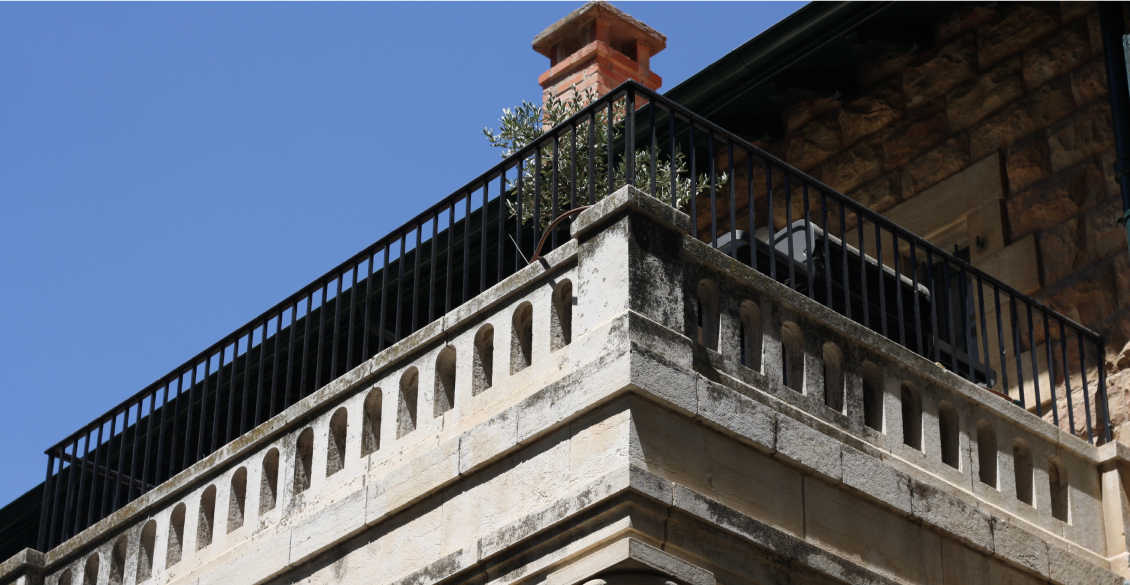
ÁDÁM BOLLÓK, GLASSMAN HOLLAND RESEARCH FELLOW
“Three Key Late Antique Mortuary Sites in Northern Israel: Gush Halav, Tarshiha, and the Northern Cemetery of Scythopolis/Bet She‘an”
I am an archaeologist and historian specialising in research into late antique and early medieval mortuary practices as well as in the archaeology of Mediterranean small finds and toreutics. My field of research includes the archaeology of late antique jewellery and dress accessories and their burial contexts, the Eastern Roman Empire’s relations with her barbarian neighbours, and the archaeology of the Avars, an early medieval people in East-Central Europe. My current long-term project is centred on exploring the Christianisation of the mortuary realm in the eastern provinces of the Later Roman Empire. I am currently also participating in a project launched with the goal of undertaking new investigations on the outstanding collection of late Roman silver known as the Seuso Treasure.
My project as a Glassman Holland Research Fellow is focused on the re-evaluation of three key mortuary sites in Northern Israel. Significant mortuary assemblages at two sites, Gush Halav (el-Jish) and Tarshiha, were excavated and partially published in the 1930s. Accordingly, their artefacts played a prominent role in the creation of the chronology of late antique small finds in the region, although without due attention to the entirety of the assemblages owing to the high number of the unpublished finds. The Roman-age and late Antique burials at the third site, the Northern Cemetery at Bet She‘an, explored in the 1920s and 1930s, have remained unpublished and thus virtually unstudied almost in their entirety. The main objective of my project is thus to eliminate as great a part as possible of this gap in our knowledge by examining and publishing the mortuary artefacts of these three sites kept in the Rockefeller Archaeological Museum and to construct a refined chronological framework for the late antique small finds in Northern Israel, whereby a better understanding of the development of mortuary rituals in late Antiquity can be gained.
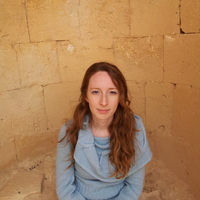
Ben-Gurion University in the Negev
“A Comparison of the Monastery at Tel Masos and Byzantine Monasteries in the Negev Desert”
Rachel earned her master’s degree and PhD from the Ben-Gurion University in the Negev. Her research addresses Byzantine monasteries in the Negev Desert, including the case study of the monastery at Tel Masos, which is noted for its unique architectural properties as well as its affiliation with Syriac Christianity.
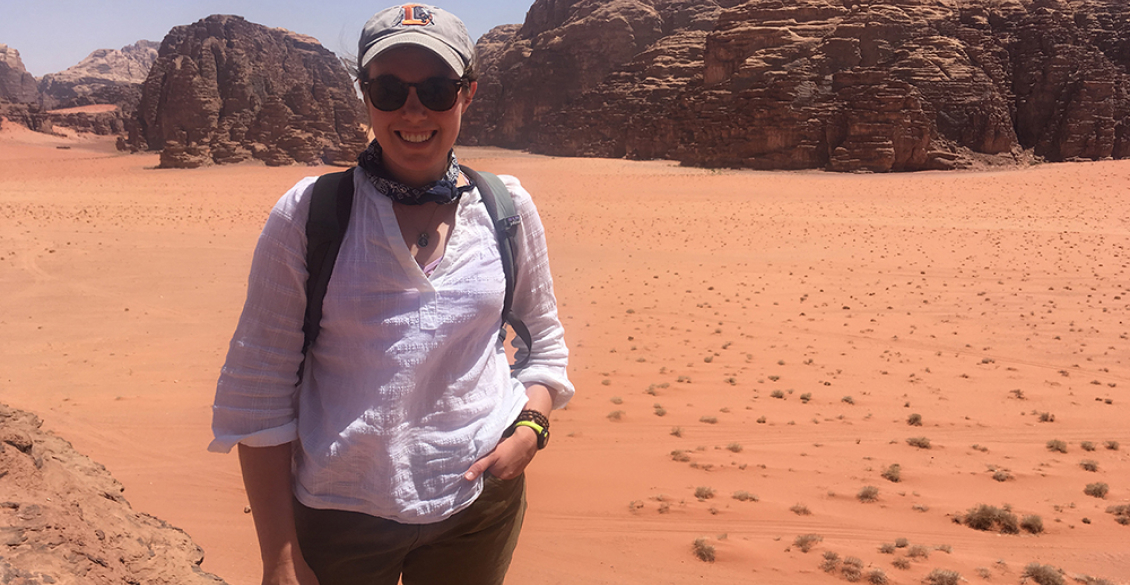
JOCELYN BURNEY, CAROL & ERIC MEYERS EDUCATIONAL & CULTURAL AFFAIRS FELLOW
University of North Carolina at Chapel Hill
“Constructing Diaspora: The Material World of Jewish Communities in the Greater Aegean (2nd-6th centuries CE)”
I am a PhD candidate in the Department of Religious Studies at the University of North Carolina at Chapel Hill. My dissertation will analyze the fundraising, construction, and maintenance of synagogues and graves among the communities of the late antique Jewish diaspora in Greece, the Aegean Islands, and western Turkey. I am also a senior staff member of the Huqoq Excavation Project in lower eastern Galilee. While at the AIAR, I plan to conduct analysis of synagogue donor inscriptions and funerary inscriptions from Galilee and the Coastal Plain, which will serve as comparanda for the material from Greece and Turkey that forms the basis of my dissertation.
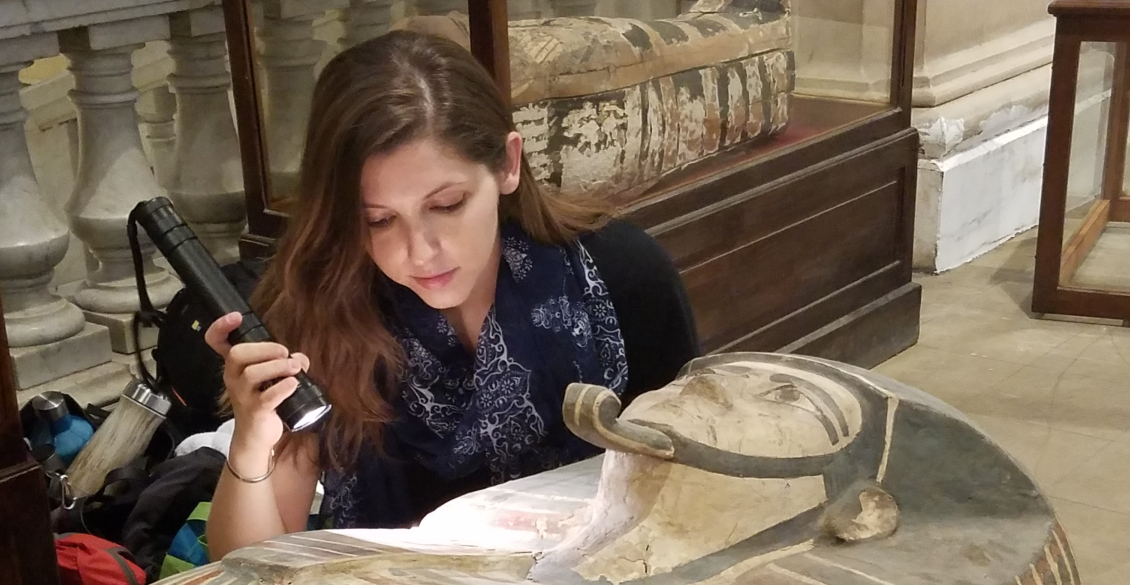
DANIELLE CANDELORA, EDUCATIONAL & CULTURAL AFFAIRS FELLOW
University of California, Los Angeles
“Adapting Abroad: Redefining ‘Hyksos’ Identity in Egypt and Western Asia”
Danielle Candelora is an Egyptian archaeologist and will be starting as Assistant Professor of Ancient Mediterranean History at SUNY Cortland this fall. She earned her Ph.D. from UCLA’s Near Eastern Languages and Cultures department in June. Her research investigates the
multivariate processes of identity negotiation in the Eastern Nile Delta during the Second Intermediate Period, an era of intensive immigration from the Levant which culminated in the rule of the Hyksos in the North of Egypt. Danielle is a co-director of the AEF Conservation OPNARP Project, a co-director of the Museology Field School at the Museo Egizio di Torino, and a member of the UCLA Coffins Project directed by Kara Cooney.
This project reconceptualizes how we conceive of Hyksos identity, primarily through the application of several recent theoretical approaches linked to identity negotiation in contexts of immigration and cultural contact. My dissertation research has worked to redefine the Hyksos, including both the malleability of Hyksos identity as political strategy as well as the extent and character of Hyksos-Egyptian-Levantine interaction. At the Albright I will expand this work to provide an updated reassessment of Hyksos interaction with the Levant, focusing on diplomatic and trade relations. I will be investigating religious syncretism through immigration in this period, as well as analyzing the legacy of the Hyksos on Egyptian culture and Late Bronze Age empire.
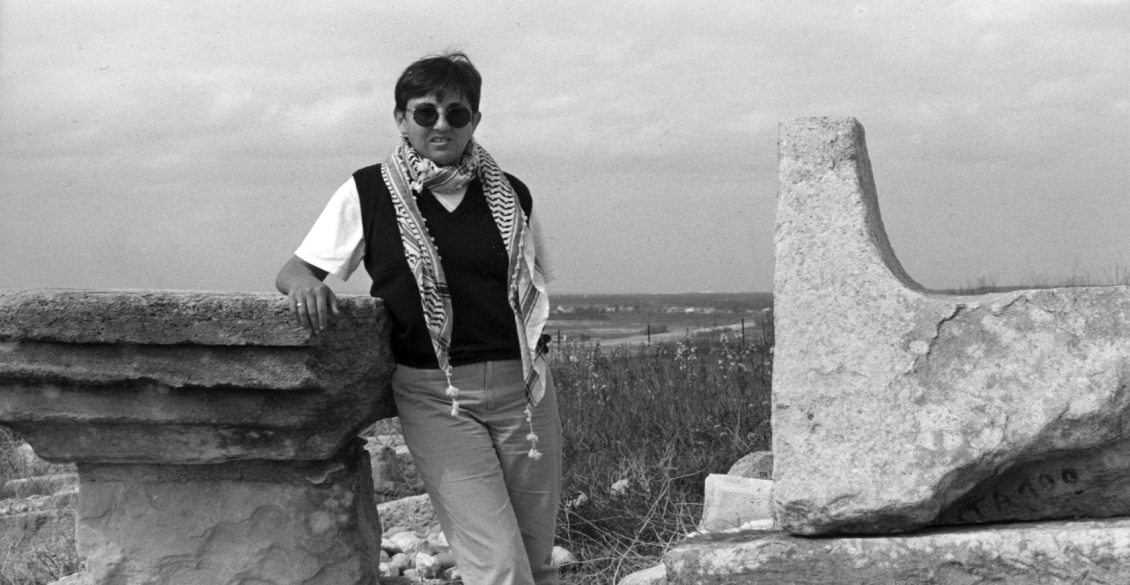
LOUISE HITCHCOCK, NATIONAL ENDOWMENT FOR THE HUMANITIES FELLOW
University of Melbourne
“Entangled Identities: Philistines, Mediterranean Pirates, and the Beginnings of Globalization”
I am Professor of Aegean Bronze Age Archaeology in the Classics and Archaeology Program at the University of Melbourne. My current research is engaged with Mediterranean island identities, globalization, decolonization, interconnections, and entanglements.
To be a ‘Philistine’ has entered our language to mean uncouth or barbaric, a perception deeply situated in biblical thought. Just as the Greeks described non-Greek neighbors as ‘Barbarians,’ so too did the biblical writers describe people settled along the southern coast of the Levant in derogatory terms. In contrast, archaeology reveals them to be a socially and economically advanced, technologically innovative (iron production), artistically sophisticated (decorated Mycenaean-Greek style pottery), and cosmopolitan culture that positively influenced the surrounding region. I will use my time at the Albright to build on my last 19 years of research on the Philistines at Tell es-Safi/Gath and in Cyprus and the Aegean to finish an article on biography of a building excavated at Tell es-Safi/Gath based on my prior experience in object biography and architectural studies. It will represent a major contribution to Philistine archaeology and early Iron Age Urbanism, building on a topic I have published on previously. I plan to also write a book chapter on the stratigraphy at Tel es-Safi/Gath for one of the Final Reports to be published in the final report series: Ägypten Und Altes Testament in Münster. If time allows, I will also write a journal article on my excavation work on the Bronze to Iron Age transition at the Philistine site of Tell es-Safi/Gath (ca. 12th century BCE). Evidence from our excavations can be used to demonstrate that the appearance of the Philistine culture was not a violent invasion by Mycenaean colonists. A peaceful transition can be demonstrated by the absence of a destruction level along with new cuisines including the early appearance of pork consumption in the Bronze Age Canaanite levels. I also intend to investigate some of the ethical issues surrounding studies of globalization and migration of the Philistines with regard to localized views of otherness.
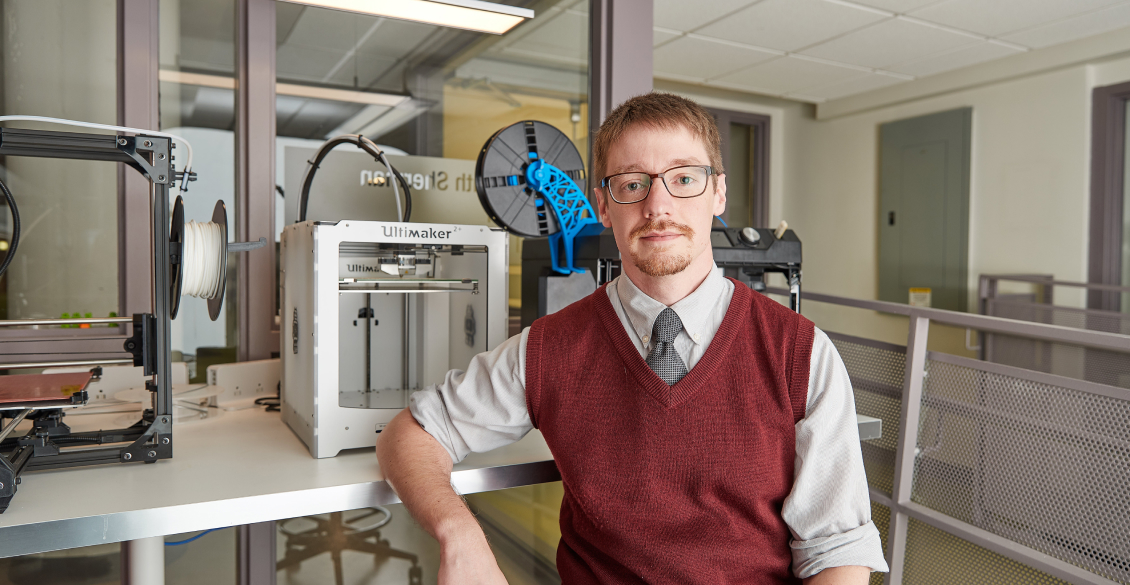
MICHAEL B. JOHNSON, EDUCATIONAL & CULTURAL AFFAIRS FELLOW
Hebrew University of Jerusalem
“Revisiting the Reconstruction of 4QHodayota with 3D Modeling”
I am currently a postdoctoral researcher at the Hebrew University working under the supervision of Prof. Esther Chazon. In September 2019, I defended my dissertation, “Reassessing the Genres of the Hodayot” at McMaster University, Hamilton, Ontario, Canada. My research for the Educational and Cultural Affairs (ECA) Junior Research Fellowship is an integral component of my postdoctoral research project, which is funded in part by the Azrieli Foundation and Social Sciences and Humanities Research Council of Canada.
My research will reevaluate the material reconstruction of 4QHa. This scroll is considered to be the most significant of the Cave 4 Hodayot scrolls because it is the clearest and fullest example of a Hodayot collection to attest an alternative sequence of psalms, and it has the greatest concentration of liturgical features, including the rare use of the first person plural, language of rejoicing, and references to praising God with the angels. There are, however, still outstanding questions about the arrangement of fragments that make it difficult to evaluate its function as a special arrangement of sectarian psalms and its relationship to the larger collection of psalms in 1QHa.
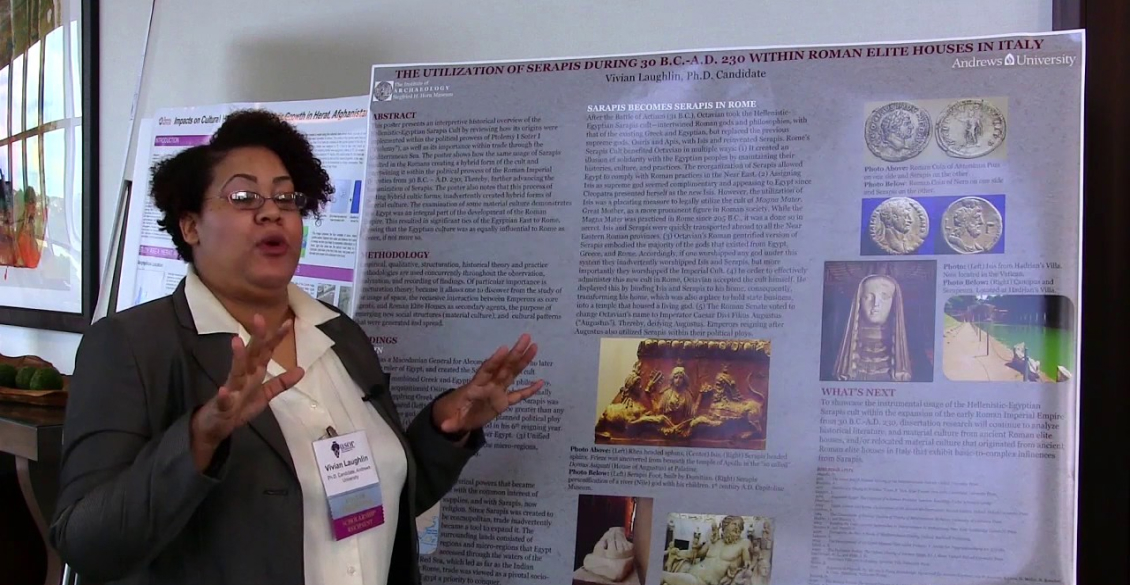
VIVIAN A. LAUGHLIN, FULBRIGHT POST-DOCTORAL RESEARCHER
Hebrew University of Jerusalem
“Serapis and Isis in Ancient Judea and Palestine”
I am currently a Fulbright Post-doctoral Researcher hosted at The Hebrew University of Jerusalem. My post-doctoral project addresses essential aspects of broader content and context that were excluded from my dissertation entitled, “The Appropriation of the Hellenistic-Egyptian Cult of Serapis: A Multi-Disciplinary Study Focusing on Augustus, Nero, Hadrian, their Coinage, and Villas.” The dissertation encompassed Roman emperors increased religious and imperial influence through the strategic appropriation of deities linked to ancient Egypt and ultimately the Serapis cult. However, my Fulbright post-doctoral project entitled, “Serapis and Isis in Ancient Judea and Palestine,” encompasses the use of agency from the Ptolemaic and Roman rulers by appropriating the cult of Serapis and Isis. It first examines the diaspora evidence of the Hellenistic-Egyptian Serapis and Isis cult as it traveled from a Ptolemaic-Egypt to Ancient Judea and Palestine. Second, it analyzes the cult’s expansion as a Roman Imperialized cult in Ancient Judea and Palestine.
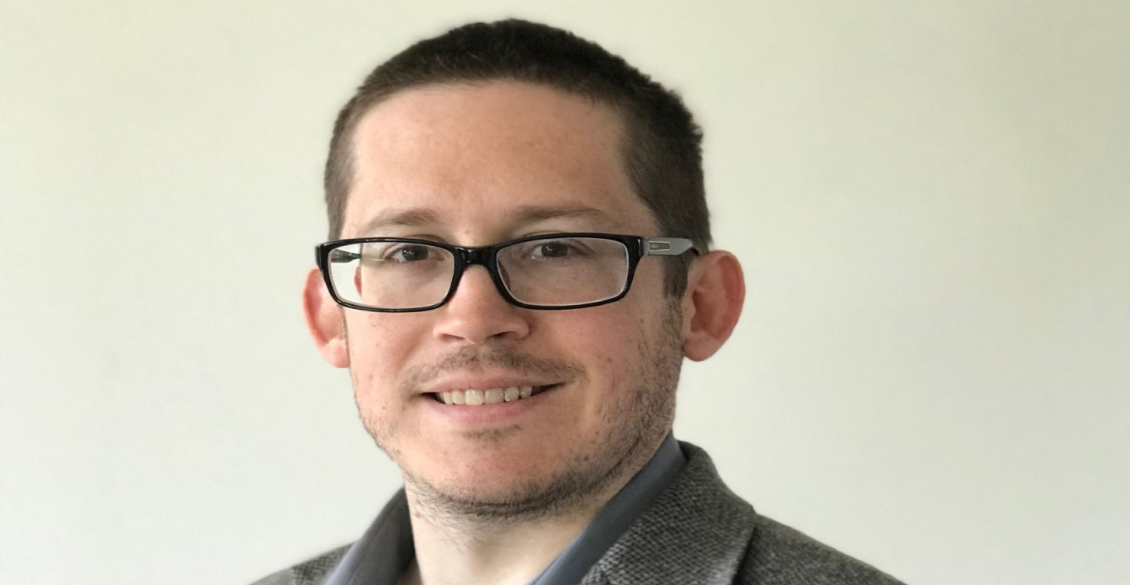
DREW LONGACRE, NATIONAL ENDOWMENT FOR THE HUMANITIES FELLOW
University of Groningen
“Scribes and their Psalters: Situating Ancient Psalm Collections in Their Scribal Contexts”
Drew Longacre is a specialist on Greek and Hebrew manuscripts, paleography, and textual criticism. He has conducted research at the University of Birmingham, the University of Helsinki, and the University of Groningen, and he was an ECA Junior Research Fellow at AIAR in 2015. Drew has written extensively on ancient manuscripts and scribes, making important contributions especially to the study of the texts of Exodus, Psalms, and Isaiah.
As part of my larger research agenda on the relevance of micro-historical profiling of particular scribes for the study of the textual tradition of the Psalms, I will use the NEH fellowship to focus on the identification and profiling of specific writers. First, with the use of newly developed digital tools for writer identification, I will formulate preliminary hypotheses about which manuscripts were written by each of the scribes who wrote Psalms scrolls. Second, I will examine each Psalms scroll in the IAA lab alongside all of the other manuscripts that I have identified as potentially having been written by the same scribe, with the goal of either confirming or rejecting their identification with this scribe. Third, once I come to my final conclusions about which manuscripts were written by the same scribes as the Psalms scrolls, I will try to profile each of these scribes on the basis of the multiple identified examples of their work. The results of this project promise to shine significant new light on the specific roles that these particular scribes played in the development of the written tradition of psalmody.

CAROLINE MCCRACKEN-FLESHER, LYDIE T. SHUFRO SUMMER RESEARCH FELLOW
University of Wyoming
“Roberts the Painter, Scott the Writer and the Scottish Orientalizing of Nineteenth-Century Archaeology”
Caroline McCracken-Flesher is Professor of English at the University of Wyoming. She was educated at Edinburgh, Oxford and Brown universities. She is published widely in Scottish literature and culture, and recently focuses on nineteenth-century tourism. She is Convenor of the International Association for the Study of Scottish Literature, and incoming director for the Center for Global Studies at Wyoming.
My project brings together early archaeology, art and literature, pursuing the construction of nineteenth-century Israel/Palestine, as place and as people, in the artist’s and author’s eye.
David Roberts’s depictions of Palestine remain popular for today’s tourists. Roberts imagined he aimed for objectivity when he viewed archaeological remains. Yet to twentieth-century scholars, he purveyed an orientalized Middle East. I bring a twenty-first century appreciation of cultural networks to bear on Roberts’s art from my work in British literature and nineteenth-century tourism, aiming show a more nuanced reality. At the Albright, I will compare archaeological sites and Roberts’s pictures, cross-check Roberts’s images against nineteenth-century photographs (their perspectives cued by Roberts’s work), and hold these against a literary map of Palestine that guided Roberts and thus, sometimes, the eye of period archaeologists.
Roberts is often read as a colonializing Englishman, but he was Scottish. Walter Scott’s 1825 novel, The Talisman, guided his eye as it encountered Palestine, and directed it toward the political interventions that can be accomplished for a neglected population by a superficially nostalgic art. Triangulating Roberts’s literary and artistic sources, the sites he saw and the archaeology he encouraged, I aim to redraw the map of artistic and literary influence and meaning with respect to David Roberts.

SHANA O'CONNELL, GEORGE A. BARTON FELLOW
Howard University
“The Art of Re-Assembly: Painted Plaster from the Late Hellenistic Period at Tel Kedesh”
I am a Master Instructor in the Department of Classics at Howard University where I teach courses on the Archaeology of the Ancient Mediterranean, Mythology, and social history. I specialize in ancient painting around the Mediterranean and have published on wall painting from Pompeii and Huqoq as well as the misuse of Classical texts in a fifteenth-century universal history. I am particularly interested in the techniques and materials of ancient artists as well as the multi-valence of their work in ancient and more recent contexts.
At AIAR I will conduct research on painted plaster finds from a Hellenistic-era administrative center at Tel Kedesh. The artists of these walls created eighteen distinct colors to imitate the surface of drafted masonry, a carved egg-and-dart motif, and brecciate marble. This trompe l’ceil decorative program derives from the Greek “Masonry Style” and was intended to demonstrate cosmopolitan tastes of local elites.

“The Religious Soundscapes of the Crusader States, 1098-1291”
I received my PhD degree in Byzantine history from King’s College London. Among my research interests are cultural exchange, iconography and the soundscape. My latest projects have focused on the expansion of bell ringing in the Byzantine Empire and the Balkans. I have conducted research in Turkey (ANAMED, Istanbul; AKMED, Antalya), Bulgaria (CAS Sofia), Greece (The American School of Classical Studies in Athens) and Italy (The Vittore Branca Center, Venice).
At the Albright I am going to study the religious soundscape of the Crusader States through a combination of written sources (historical chronicles, religious documents) and instances of material culture (bells, bell towers). My aim is not only to research the introduction of bell ringing in the Holy Land, but also to reveal the impact that the new practice had on the local communities of the Levant, both Christian and Muslim.
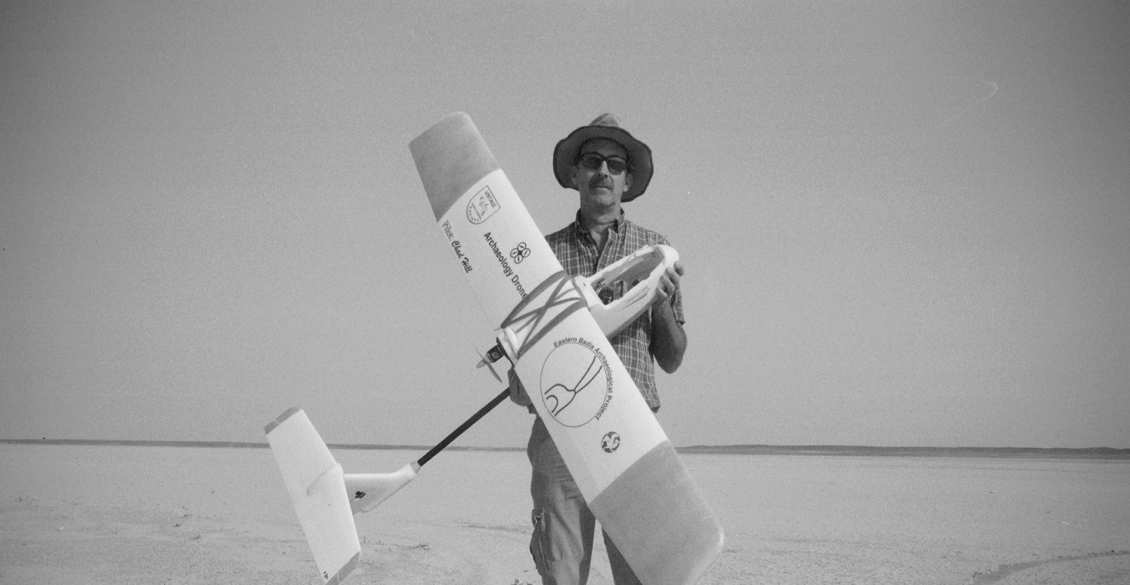
YORKE M. ROWAN, NATIONAL ENDOWMENT FOR THE HUMANITIES FELLOW
Oriental Institute of the University of Chicago
“Tel Yaqush: Excavations of an Early Bronze Age Site in the Jordan Valley”
I am an anthropological archaeologist and Research Associate Professor at the Oriental Institute of the University of Chicago. My fieldwork combines survey and excavation to explore changes during later prehistory (Late Neolithic, Chalcolithic and Early Bronze). Topically, my research focuses on death, prehistoric ritual performance and material objects mediating these human actions. Especially those made of rock. I co-direct the Galilee Prehistory Project in Israel, and the Eastern Badia Archaeological Project in Black Desert of Jordan, both University of Chicago field research programs. During my NEH fellowship project, I will be completing research and writing for the preparation of a monograph on the legacy excavations at Tel Yaqush, an Early Bronze Age site in the Jordan Valley excavated by the late Douglas Esse and David Schloen.

JOACHIM SCHAPER, S. GITIN DISTINGUISHED PROFESSOR
University of Aberdeen
“Measuring, Weighing and Striking the Balance: Material Culture and Intellectual and Moral Pursuits”
I studied Theology, Philosophy and Assyriology at the University of Tübingen and Theology at the University of Cambridge, earned my doctorate at Cambridge with a thesis on Eschatology in the Greek Psalter and proceeded to a Habilitation at Tübingen, devoting my Habilitationsschrift to the history of the priesthood in ancient Israel. I was a Research Fellow at Clare College, University of Cambridge, taught as a Privatdozent in Old Testament at the University of Tübingen from 1999 to 2005 and moved to Aberdeen in 2005 to take up a Readership in Old Testament. In 2006, I was appointed to a personal chair (Chair in Hebrew, Old Testament and Early Jewish Studies), and in 2012 was translated to the Chair of Hebrew and Semitic Languages (established in 1673). I served as the President of the International Organization for the Study of the Old Testament (I.O.S.O.T.) from 2016 to 2019 and hosted the 23rd congress of the I.O.S.O.T. at the University of Aberdeen in August 2019.
My research will focus on the use of weights and measures in ancient Judah and the intellectual ramifications of such use. The increasing refinement of the tools and practices of weighing and measuring encouraged the exploration of all kinds of relations – relations between objects, between humans, between humans and non-human agents, and between humans and objects. In the course of time, the continuous process of standardisation led to a more and more refined conceptualisation of equivalence, equilibrium, reciprocity, exchange, value, and value-equivalence. Developments in the material culture of metrology and, later, the use of coinage thus had remarkable effects on people’s conceptualisations of ‘reality’, of ethical behaviour and of justice (both in law and in religion). It is those developments that I wish to explore.
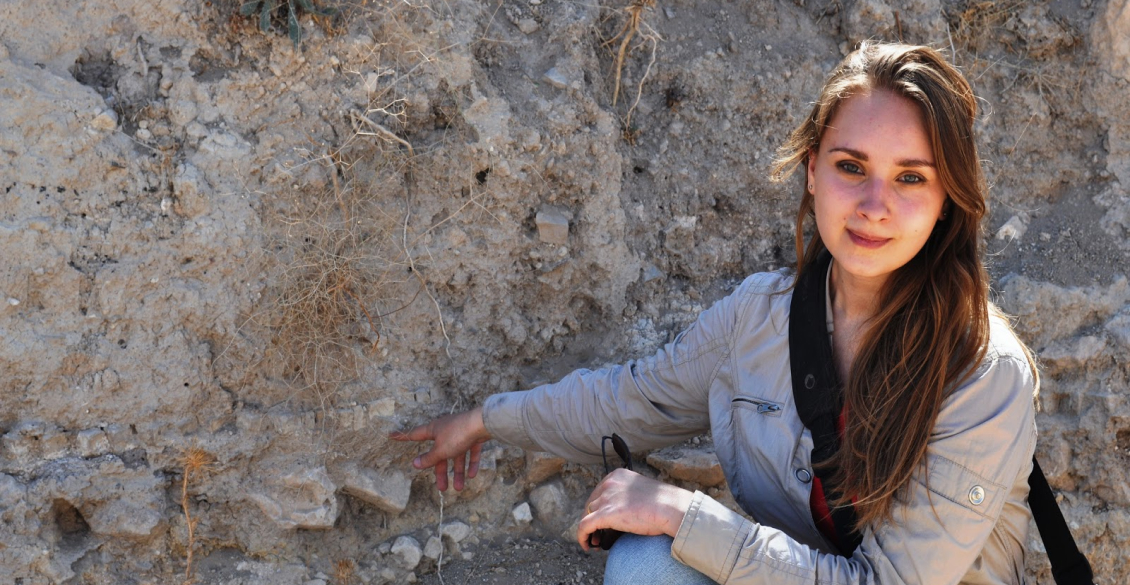
ANA SILKATCHEVA, MARCIA AND ODED BOROWSKI RESEARCH FELLOW
University of Oxford
“Geometric Patterns on Floor Mosaics of the Byzantine and Islamic Periods in the Levant”
I am an archaeologist focusing on the Late Antique period and beyond in the Near East, with broader interests in the material and visual culture of the greater Islamic world. I was trained at Australian universities and on field projects mostly in Jordan on Byzantine/Islamic sites. I also have interests and expertise in the related fields of museum and heritage studies, as well as an ongoing fun project developing archaeologists’ competence in colloquial Arabic. Currently, I am writing my DPhil (PhD) thesis on the Byzantine/Islamic mosaics of the Levant at the University of Oxford’s Khalil Research Centre for the Art and Material Culture of the Middle East.
During my time at the Albright Institute I will be collecting foundational data for my doctoral project. I am specifically interested in the geometric patterns on mosaic pavements laid in the Byzantine and early Islamic periods. Studies of figural motifs on mosaics abound, but geometric patterns have been almost entirely overlooked. However, recent research has highlighted their exciting potential to reveal technical aspects of production, including workshop organisation, chronological development, and the transmission of forms – and therefore ideas – across the region. While in Jerusalem I will undertake archival research as well as high-resolution photography and physical measurements of mosaics preserved in situ and in museums across the country.
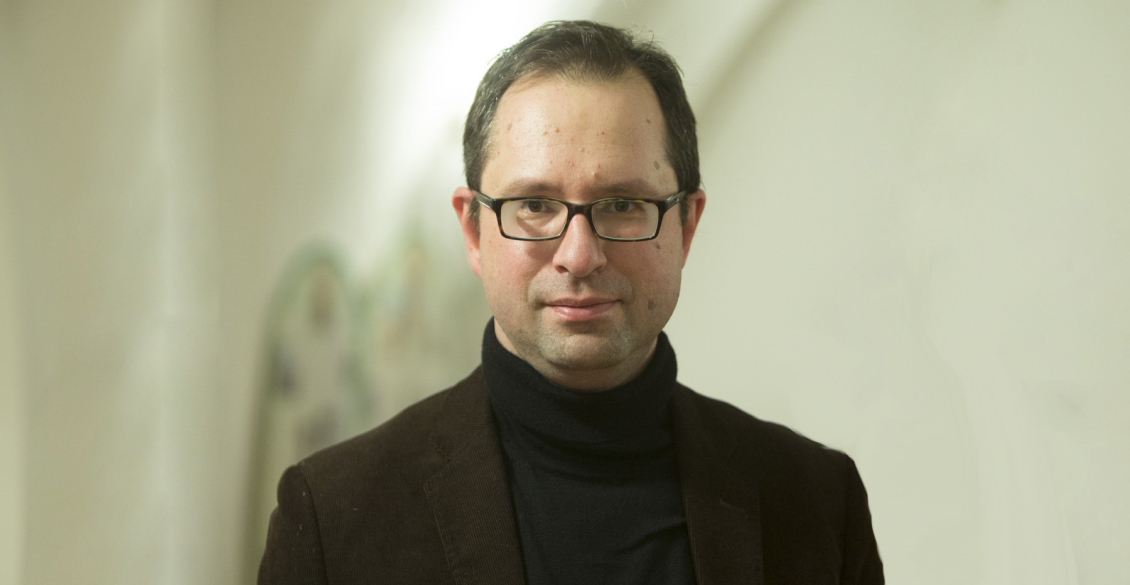
ALEXEI SIVERTSEV, S. GITIN DISTINGUISHED PROFESSOR
DePaul University
“Urban Communities in Context: Reading Late Antique Synagogue Floors in Roman Palestine as Relational Models”
I am a Professor at DePaul University’s Department of Religious Studies. I received my B.A. from the Historical Archival Institute, Russia State University for the Humanities, and my M.A. and Ph.D. in Hebrew and Judaic Studies from New York University. My research focuses on the study of Jewish cultural dynamics in late antiquity. For my project at AIAR, I will explore late antique synagogue floor mosaics in the Beth Shean area of Israel. The project is part of a broader attempt to understand how Jewish and Christian communities in urban settings described themselves in relation to a variety of symbolic markers, such as language, geography, chronology, and indicators of status.
Some of my recent publications include:
Sivertsev, A. (2011). Judaism and Imperial Ideology in Late Antiquity. Cambridge: Cambridge University Press.
Sivertsev, A., (2014). “Jerusalem Talmud Sanhedrin 2,6 (20c): Solomon’s Dethronement and Roman Political Theory in Late Antiquity,” in Talmuda de-Eretz Israel: Archaeology and the Rabbis in Late Antique Palestine, ed. Steven Fine. Berlin: De Gruyter, 111-25.
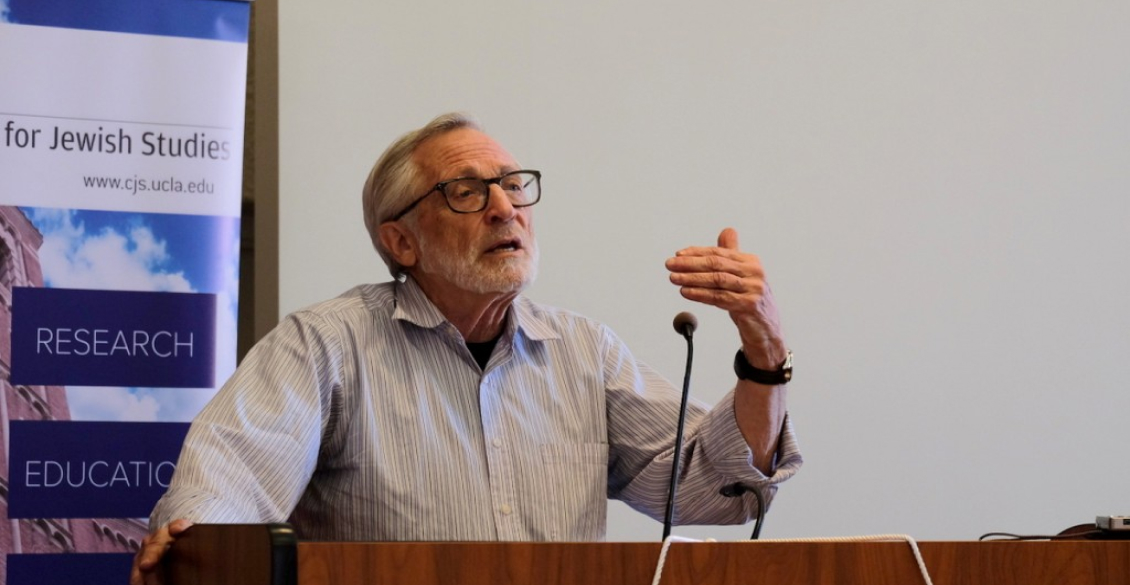
ZIONY ZEVIT, EDUCATIONAL & CULTURAL AFFAIRS ANNUAL PROFESSOR
American Jewish University
“Revisiting Kuntillet ‘Ajrud”
Ziony Zevit is Distinguished Professor of Biblical Literature and Northwest Semitic Languages and Literatures at the American Jewish University.
I have been restudying the well-published and much discussed Kuntillet Ajrud, excavated in the 1970’s, for almost a decade. My research objective throughout has been to understand this unique site, located well-off any ancient beaten track, as a material artifact created in time and space by viewing it as a particular, externalized expression of Israelite religions. I intend for the resulting monograph to provide a thick description of Ajrud, drawing on and synthesizing insights from four decades of critical scholarship after filtering them through my own observations. During my stay at the Albright, I plan to complete the writing and editing of the work.






